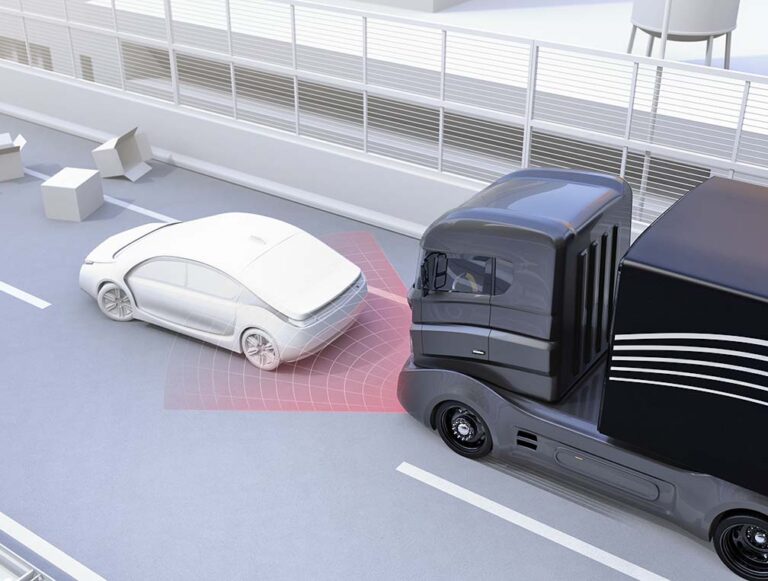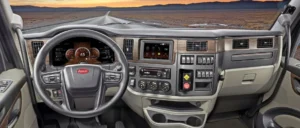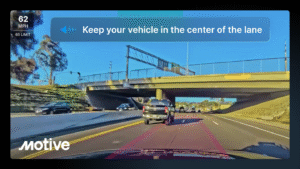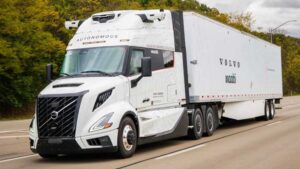WASHINGTON — The comment period for a proposal to require new heavy vehicles weighing more than 10,000 pounds to be equipped with automatic emergency braking (AEB) systems is now open on the Federal Register.
On June 22, the U.S. Department of Transportation’s (USDOT) National Highway Traffic Safety Administration (NHTSA) and Federal Motor Carrier Safety Administration (FMCSA) announced the Notice of Proposed Rulemaking (NPRM), saying that AEB systems “will mitigate the frequency and severity of rear-end crashes.”
“Advanced driver assistance systems like AEB have the power to save lives,” said NHTSA Chief Counsel Ann Carlson. “Today’s announcement is an important step forward in improving safety on our nation’s roadways by reducing, and ultimately eliminating, preventable tragedies that harm Americans.”
In a statement, the American Trucking Associations lauded the proposal.
“ATA has long supported the use of AEB on all new vehicles,” said ATA Vice President of Safety Policy Dan Horvath. “With NHTSA’s recent regulation requiring AEB on all new passenger vehicles, this proposal for heavy duty trucks is timely and appropriate.”
Horvath added that “The trucking industry supports the use of proven safety technology like automatic emergency braking. We look forward to reviewing this proposal from NHTSA and FMCSA and working with them as it is implemented.”
In 2015, ATA urged car and truck manufacturers to make AEB standard equipment on new vehicles, and in 2021, the association supported legislation that would have mandated AEB technology on new Class 7 and 8 trucks.
Not everyone in the trucking industry is for the proposal, however.
Jay Grimes, director of federal affairs for the Owner-Operator Independent Drivers Association, said that agencies must resolve any performance issues before attempting to move forward.
“We are always going to have concerns about regulatory mandates for technology or any other rulemaking that hasn’t been proven to benefit highway safety,” Grimes told OOIDA’s online news site Land Line.
Grimes added that OOIDA has heard concerns from drivers about false activation, taking control out of a driver’s hands and not being able to work properly in all weather and road conditions.
“This proposal is being announced and released at the same time some of the studies for AEB on commercial vehicles are ongoing and haven’t been completed,” he said.
An AEB system uses multiple sensor technologies that work together to detect a vehicle in a crash imminent situation.
The system automatically applies the brakes if the driver has not done so, or, if needed, applies more braking force to supplement the driver’s braking. The proposed standard would require the technology to work at speeds ranging between low-speed (6 miles per hour) and high-speed (roughly 50 miles per hour) situations.
“Establishing AEB standards is a key component of the Department’s National Roadway Safety Strategy,” said FMCSA Administrator Robin Hutcheson. “This technology can enhance the effectiveness of commercial motor vehicle crash reduction strategies and reduce roadway fatalities.”
According to NHTSA statistics, there are approximately 60,000 rear-end crashes a year in which the heavy vehicle is the striking vehicle. Once implemented, NHTSA estimates the proposed rule will prevent 19,118 crashes, save 155 lives and prevent 8,814 injuries annually.
NHTSA and FMCSA incorporated feedback from the safety advocacy community, industry representatives and other interested parties to address this critical safety need on America’s roads.
The proposed rule, which fulfills a mandate under the Bipartisan Infrastructure Law, defines “heavy vehicles” as those having a gross vehicle weight greater than 10,000 pounds, such as heavy-duty trucks and buses.
NHTSA proposed a similar rule that would require AEB systems in passenger vehicles and light trucks.
In January 2022, USDOT released the National Roadway Safety Strategy, a roadmap to address the national crisis in motor vehicle fatalities and serious injuries.
USDOT also launched the next phase of the NRSS, the Call to Action campaign and released a one-year progress report with accompanying data visualizations that highlight the extent and magnitude of the U.S. roadway safety problem and ways to eventually bring the number of deaths on our roadways to zero.
Public comments on the proposed rule will be accepted for 60 days. Click here to learn more about the rulemaking process.
The Trucker News Staff produces engaging content for not only TheTrucker.com, but also The Trucker Newspaper, which has been serving the trucking industry for more than 30 years. With a focus on drivers, the Trucker News Staff aims to provide relevant, objective content pertaining to the trucking segment of the transportation industry. The Trucker News Staff is based in Little Rock, Arkansas.
















Please do not install AEB systems on vehicles. If you truly want to improve traffic safety, lose the ridiculous electric log books. The electric books have made drivers drive like mad men to avoid a violation of hours of duty status. The more electronic items you put on trucks not only costs more, does not improve safety, but rather adds a lot of work for the towing industry. Thank you for that. You can’t fix stupid, and that is currently what affeccts what I already know with our current driver shortage. The talent is not there like the good old days, and you try to make up for that with adding more and more electronics to compensate. It’s not working
Ok rocket scientist who are coming up with these electronics for big trucks need to hop in one for about a day and you will change your mind. There is nothing worse than going down the highway riding and a guiding and the sensor your great invention of the AEB picks up the overpass you are fixing to go under and locks your brakes up for you and the vehicle behind you smashes into you and maybe a few more. Your AEB just caused a rear end crash not preventing one. Another example is in the Winter time and your sensor picks up something besides a vehicle you are coming up behind and puts you into a jack knife, in the ditch, and possibly even kills the driver for no reason. Do not care about the driver, just his surroundings. WHAT!!!
C’mon inventor electronic guys and you too FMSCA people hop in a truck with all of your rules and regulations. I’m sure we coud get drivers to even pay you to do it. I mean what do you have to lose??? Oh yea that’s right your life just like the driver. You need to focus on the 4 wheelers and the old highway rules duh!!! no trucks in left lane is still a number one cause of accidents because you have not figured out you are building a wall of trucks that 4 wheelers have to go through to get on and off of the highway. C’mon tough inventir guys let’s go for a ride and see if you can keep from having to change your underwear. I’m daring you and I will pay you to come check out your devices!!!